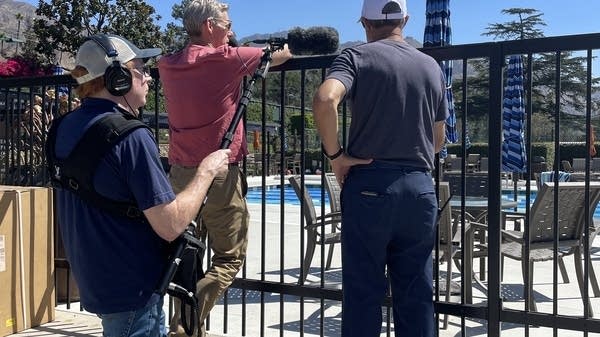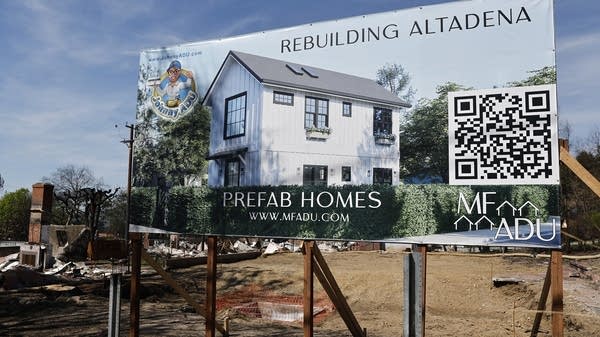A group of Altadena homeowners is banding together to lower rebuilding costs
The Altadena Collective intends to help homeowners collectively organize rebuilding efforts — and make rebuilding more affordable in the process.

David Brancaccio’s Altadena home was one of 16,000 structures burnt up in the big wildfires in January.
In a video we posted as an excellent Army Corps of Engineers crew cleared the ruins, David talked about the unpredictability of the cost per square foot for rebuilding when there is so much demand for labor and materials. It used to be maybe $400 a square foot to build in that area before the fire. Now, some are talking $550, $650 or $750. The higher it goes, the fewer who'll be able to rebuild.
Several people who watched the video wrote Marketplace with a good question: Was there a way homeowners could band together to keep costs down? By then, a loose-knit group of neighbors was already working on this. It’s called the Altadena Collective, which was started after the Eaton Fire by people who owned small, Tudor-ish cottages built roughly a century ago.
“Markeptlace Morning Report” host David Brancaccio spoke to one of the community members who helped spearhead the effort, Tim Vordtriede, an architect who lost his cottage to the fire. The following is an edited transcript of their conversation.
Tim Vordtriede: I thought, "Wow, there's a lot of bad information out there. I need to find a way to inform people," and not by just screaming into the void, which I think we all kind of did a little bit in the beginning. It needs to be in an organized fashion and help people understand what the process is for rebuilding, and how many steps you have to take, and what the sequence is. That's where we can share purchasing, essentially.
David Brancaccio: These English-y cottages that many people had — I had one, you had one, both burned — they had, for instance, many of them, distinctive windows. They seem expensive to duplicate. But your idea would be if a whole bunch of people needed windows like that, we might be able to get a price.
Vordtriede: Yeah. I mean, the way you make a window, let's say you do it out of fiberglass, which is more cost-effective than wood. It's also pretty fire resilient, which is a good practice these days. You extrude that, you know, in bulk, and once you say, "All right, this is a funky shape that we have to do." A lot of these Jane's Cottages had some very interesting window shapes. But if we're doing that 40, 50 times, you start to make fixtures in the factory that are specific to that shape, and then it becomes an assembly line, even at a small scale. So, more efficient, more cost savings.
Brancaccio: We don't know what's coming [with] tariffs, we don't know what's coming [with] labor. There's a lot in flux in the general economy that affects people in this area as well.
Vordtriede: However, from the Altadena Collective perspective, because we're trying to be a resource that helps as much of the community as possible, just going into the right people and saying, "Hey, let's have a dedicated price book for Altadena." And contractors or homeowners will come in to you, whether it's raw material or finished material, will come in to you and they get this special treatment. That's what we're trying to negotiate.
Brancaccio: It might be more efficient and you might get a better price if you can go to a builder and say, "Hey, there's seven houses all on this block that would like to use you."
Vordtriede: I think there's two elements that help that — so similarity in the actual structure of the home and proximity. If one contractor is able to lock up three or four adjacent homes or homes within a couple blocks' radius, their mobilization costs and their logistics significantly reduce. And then they can start to sequence and stage their construction. So a lot of contractors, let's say they have five homes next to each other. They'll have one or two framing crews. You know, one gets two weeks here, the next one gets the next two weeks. And then certainly with material drops or deliveries, ordering wood flooring for five homes is so much more cost-effective than ordering it for one. These were done fairly cheaply 100 years ago, and we need to take the benefit of that knowledge and replicate it.













